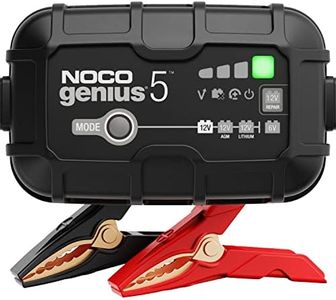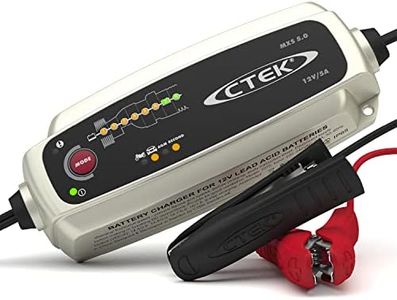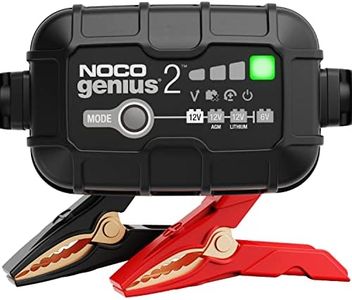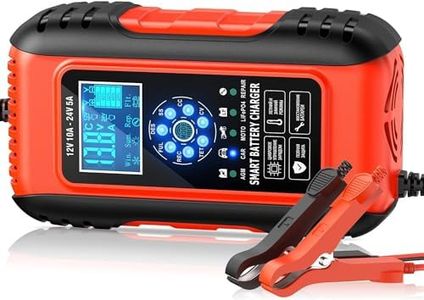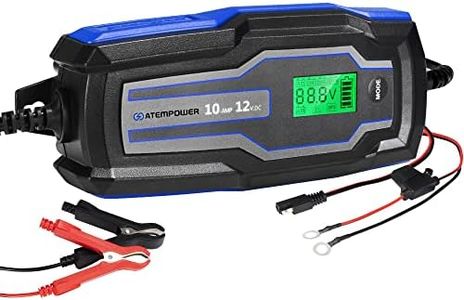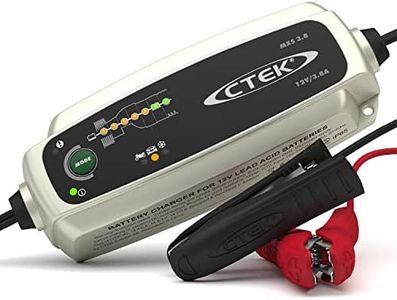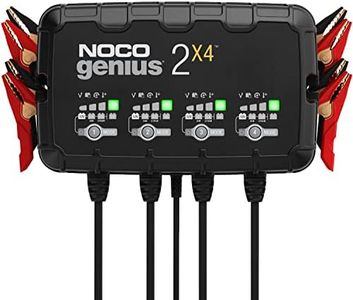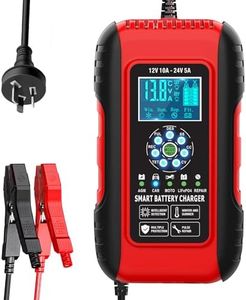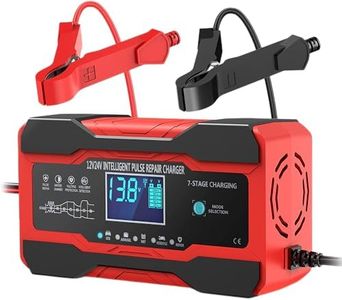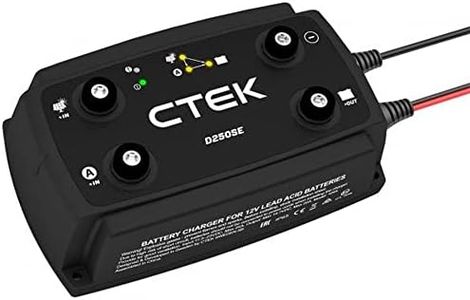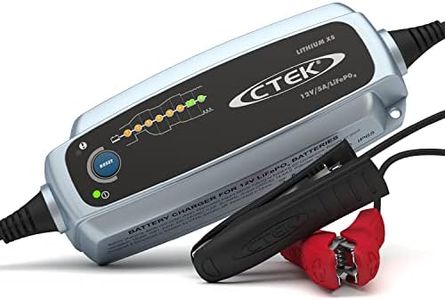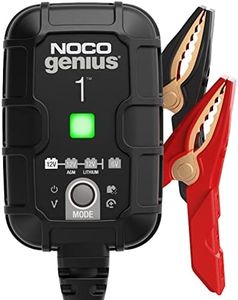We Use CookiesWe use cookies to enhance the security, performance,
functionality and for analytical and promotional activities. By continuing to browse this site you
are agreeing to our privacy policy
10 Best Atv Battery Maintainers
From leading brands and best sellers available on the web.By clicking on a link to a third party's website, log data is shared with that third party.
Buying Guide for the Best Atv Battery Maintainers
Picking the right ATV battery maintainer is crucial for keeping your ATV's battery healthy, especially if it often sits unused for stretches of time. A proper maintainer keeps your battery charged without overcharging, ensuring your vehicle is ready whenever you are. Before you buy, it's important to know what features and specifications to look for to match your battery type, usage pattern, and maintenance needs.Battery CompatibilityBattery compatibility tells you which types of batteries the maintainer can support, such as lead-acid, AGM, gel, or lithium batteries. It's important because using a maintainer that's not matched to your battery type can damage your battery or fail to keep it charged. Look for maintainers that explicitly state support for your battery type—if you have a common lead-acid or AGM battery, most maintainers will work, but lithium batteries often require special charging profiles. Always check your ATV battery’s specifications first and make sure the maintainer suits it.
Output Voltage and AmperageThe output voltage (usually 6V or 12V) and amperage (such as 0.75A, 1A, or higher) determine how the maintainer charges your battery. Voltage should match your battery: most ATV batteries are 12V, but some older or youth models might be 6V. Amperage refers to the strength of the trickle charge; lower amperage is safer for long-term maintenance, while higher amperage can top up a battery faster but may not be intended for constant use. Match the voltage exactly to your battery, and pick amperage based on how often you use your ATV—a 0.75A-1A maintainer is perfect for most users who want gentle, safe charging over long idle periods.
Automatic Monitoring and ShutoffAutomatic monitoring and shutoff is a key feature that lets the maintainer track your battery’s charge and turn itself on or off as needed. This prevents overcharging, which can harm your battery, and ensures efficient maintenance. Some maintainers offer multi-stage charging, which cycles through different charging modes based on battery status. For most users, automatic operation is essential—look for maintainers labeled as 'fully automatic' or 'smart,' especially if you plan to leave your ATV unattended for weeks or months.
Weather Resistance and DurabilityWeather resistance determines whether you can safely use the maintainer outdoors or in a damp garage. Many ATV owners store their vehicles in sheds or garages that may experience moisture and temperature changes. Maintainers with water and dust resistance ratings like IP65 or higher are more durable in these environments. Choose this feature if your charging area is exposed to the elements; for indoor, climate-controlled settings, less rugged models are usually fine.
Ease of Use and Connection OptionsEase of use includes how simple it is to set up and connect the maintainer. Some maintainers come with quick-connect leads, alligator clips, or ring terminals that make attaching to your battery easier. If you’ll be connecting and disconnecting the maintainer frequently, or if your battery is hard to reach, look for models with flexible cable options and user-friendly instructions. For those who don’t want to hassle with setup every time, ring terminal connectors you can leave attached are a great choice.
Safety FeaturesSafety features like spark-proof connections, reverse polarity protection, and short-circuit protection keep both you and your ATV battery safe from electrical mishaps. These are especially important if you’re new to battery maintenance or will use the maintainer in a shared space. Choosing a maintainer with robust safety features is a wise decision for all users, as it helps prevent accidental damage or injury.
